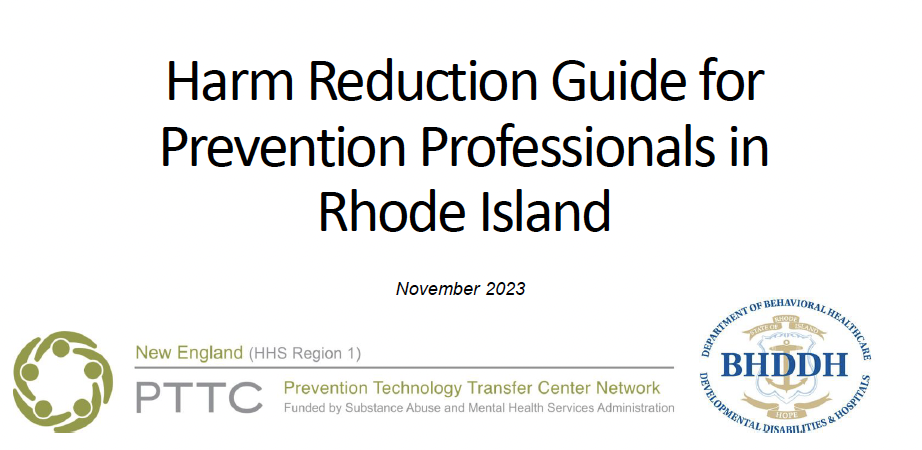
Harm Reduction Guide for Prevention Professionals in Rhode Island
This educational resource aims to advance the practice of harm reduction within the substance use continuum of care through a prevention lens. It was created by Public Consulting Group and the New England PTTC for the Rhode Island Department of Behavioral Healthcare, Developmental Disabilities & Hospitals (BHDDH). Information in this guide intends to help prevention professionals in Rhode Island learn more about harm reduction, including shared goals and priorities between the harm reduction and prevention communities, ways to collaborate, best practices for communication and services, and includes practical resources both for prevention professionals and people with a substance use condition. Though it was created for the state of Rhode Island, this guide can be used widely by prevention professionals in any state to enhance their understanding of harm reduction, the types of resources available, and how prevention can both contribute to and benefit from the advancement of harm reduction within the substance use continuum of care.
Stack the Deck Rhode Island
This product, made with input from people with lived and living experience in Rhode Island, aims to empower everyone with harm reduction tools, compassionate care resources, and guidance about how to use substances more safely. This deck of cards is sized to fit into harm reduction kits. It is intended to serve as a reference guide for people with a substance use condition about the harm reduction approach to care and practical community and medical resources to help them live the life they want. Information in the deck includes ways to voice needed changes in Rhode Island’s continuum of care, a grievance hotline, services and supplies available, why and how to test for contaminants such as fentanyl and xylazine, how to create a safe environment when using substances, housing options, instructions on how to use injectable and nasal naloxone, information on the state’s Good Samaritan Law, and what to do if an overdose is suspected.
SAMHSA defines harm reduction as a practical and transformative approach that incorporates community-driven public health strategies — including prevention, risk reduction, and health promotion — to empower people who use drugs and their families with the choice to live healthy, self-directed, and purpose-filled lives.
Funding Acknowledgement
This guide was prepared by Public Consulting Group (PCG) for the New England Prevention Technology Transfer Center (New England PTTC). The PTTC is supported by Substance Abuse and Mental Health Services Administration (SAMHSA) of the U.S. Department of Health and Human Services (HHS) as part of a financial assistance award with 100 percent funded by SAMHSA/HHS. The contents are those of the author(s) and do not necessarily represent the official views of, nor an endorsement, by SAMHSA/HHS, or the U.S. Government.
Cooperative Agreement # 5H79SP081020-05M005